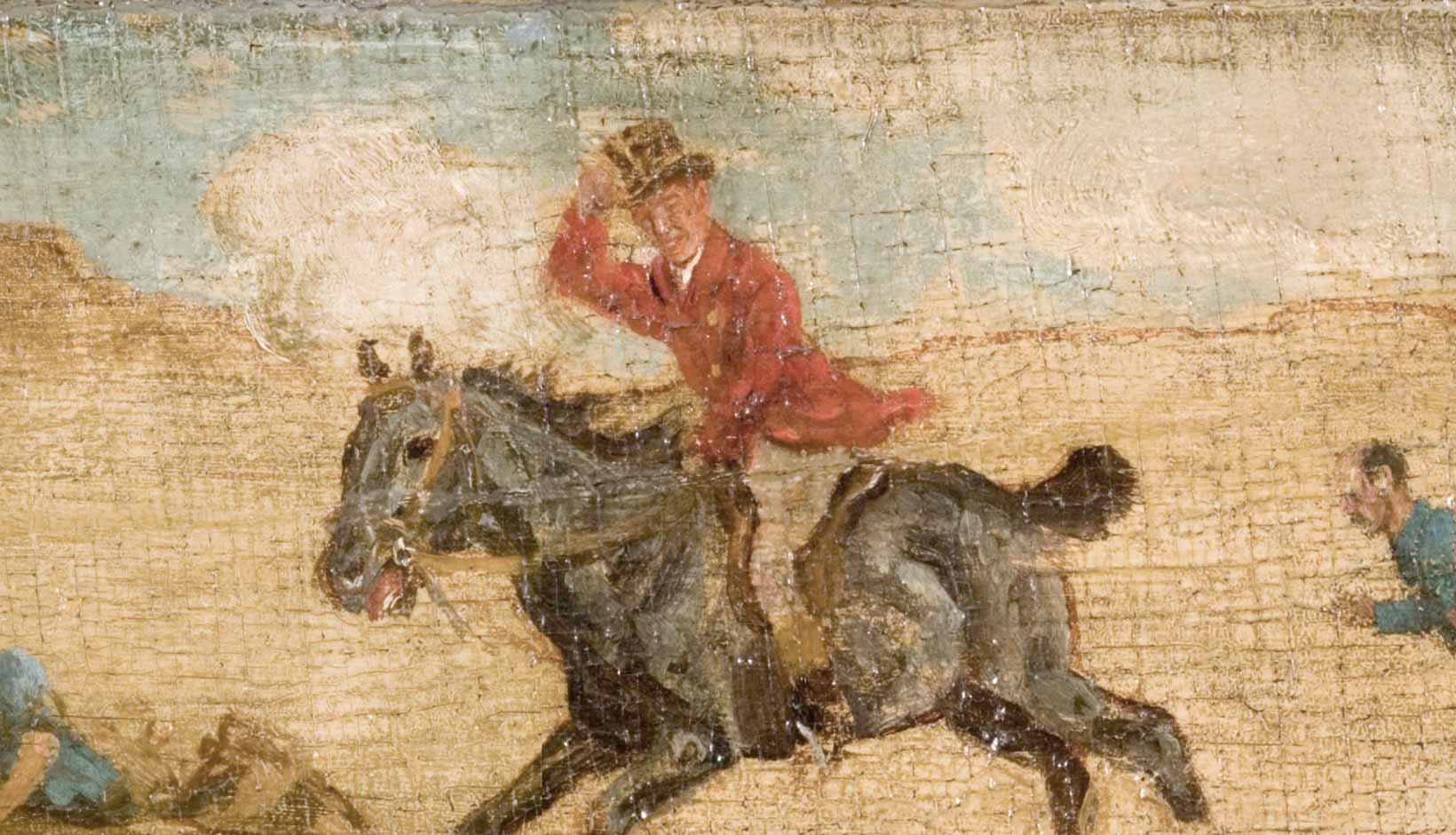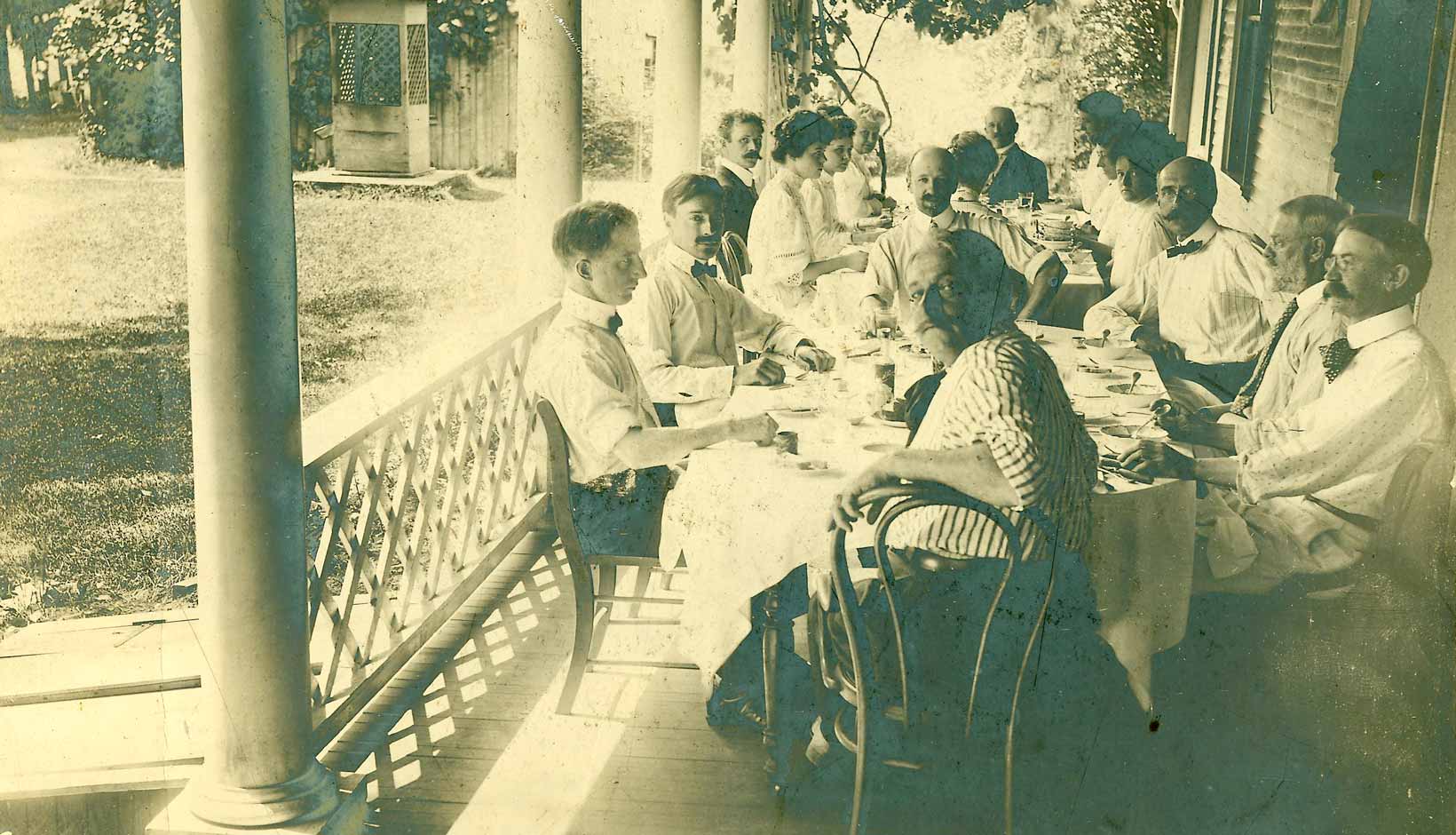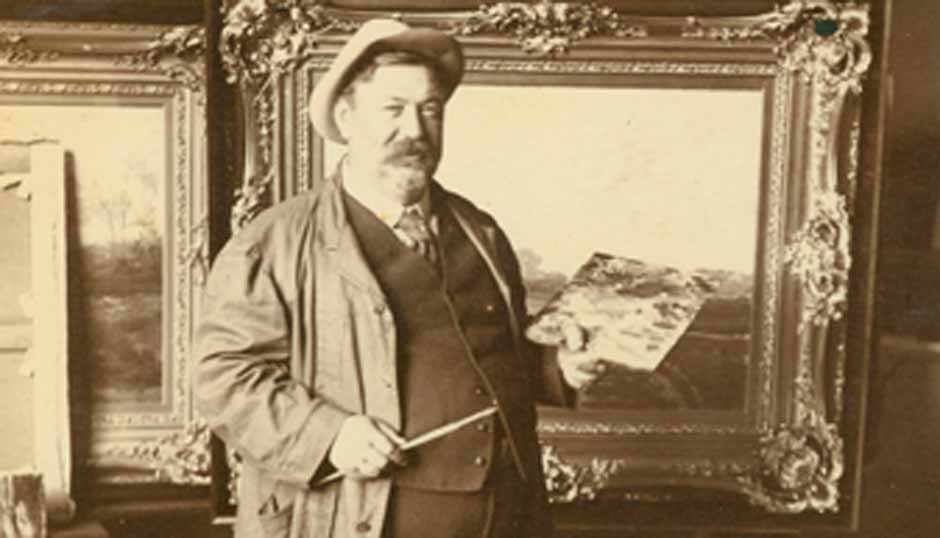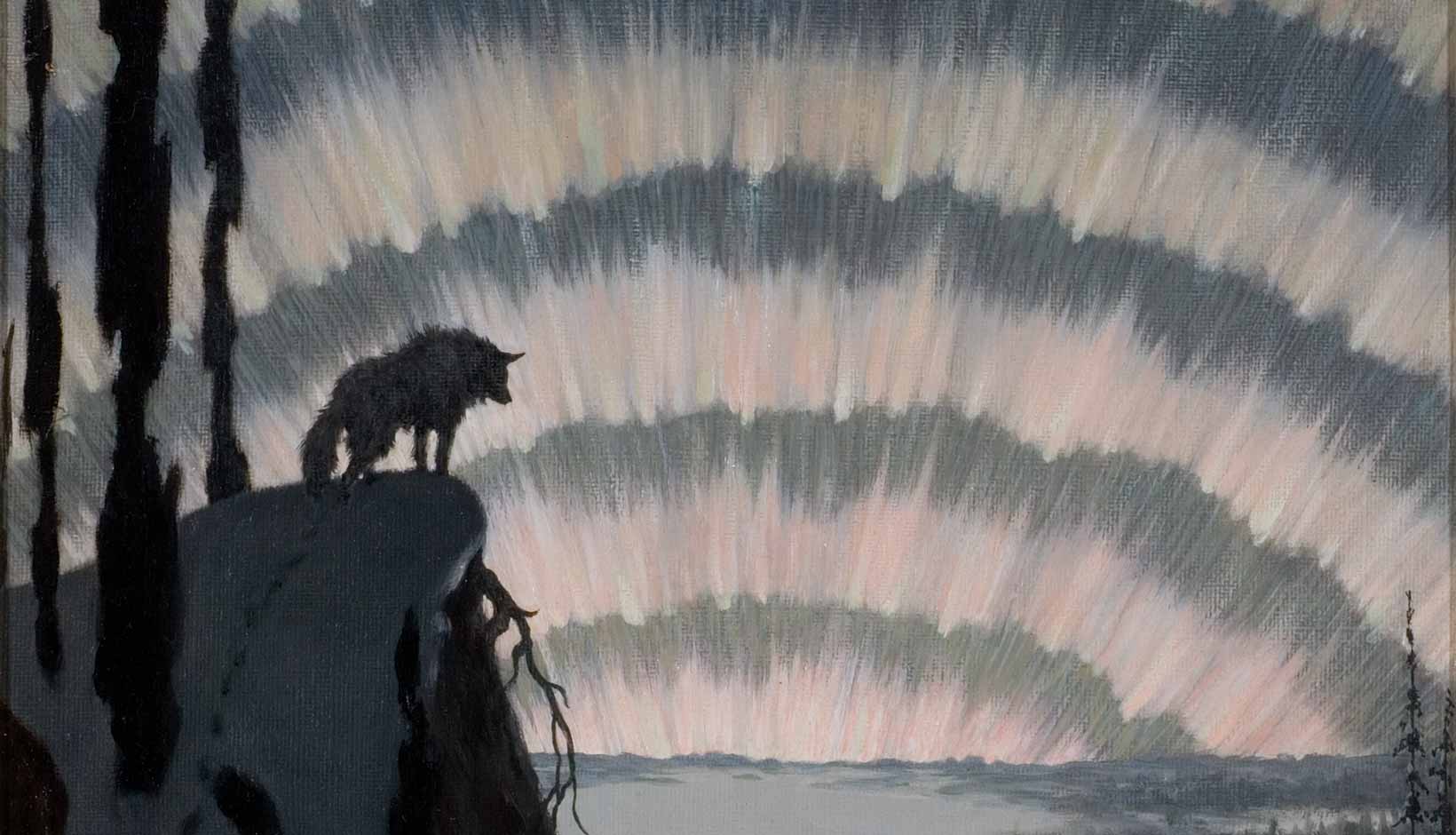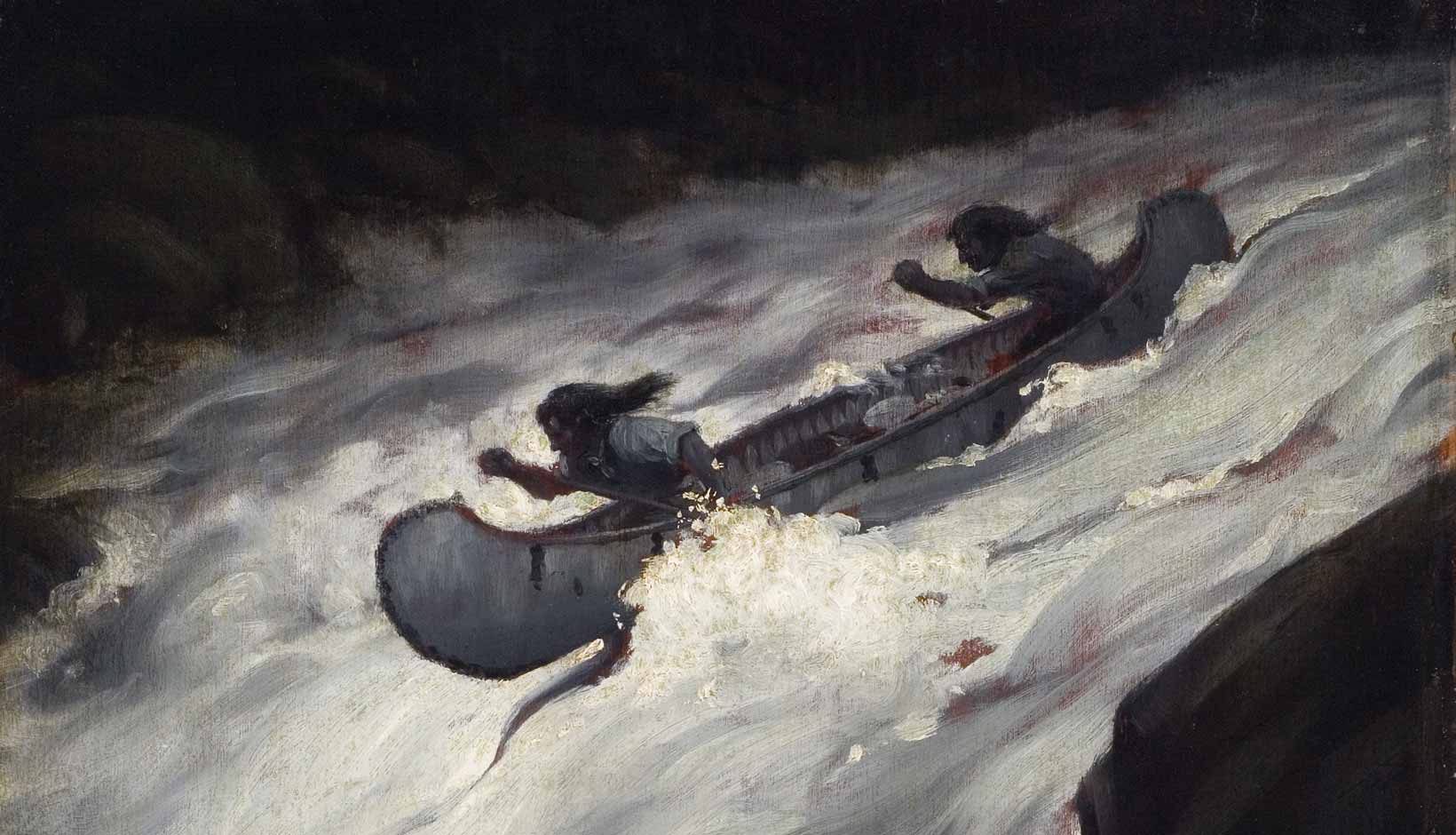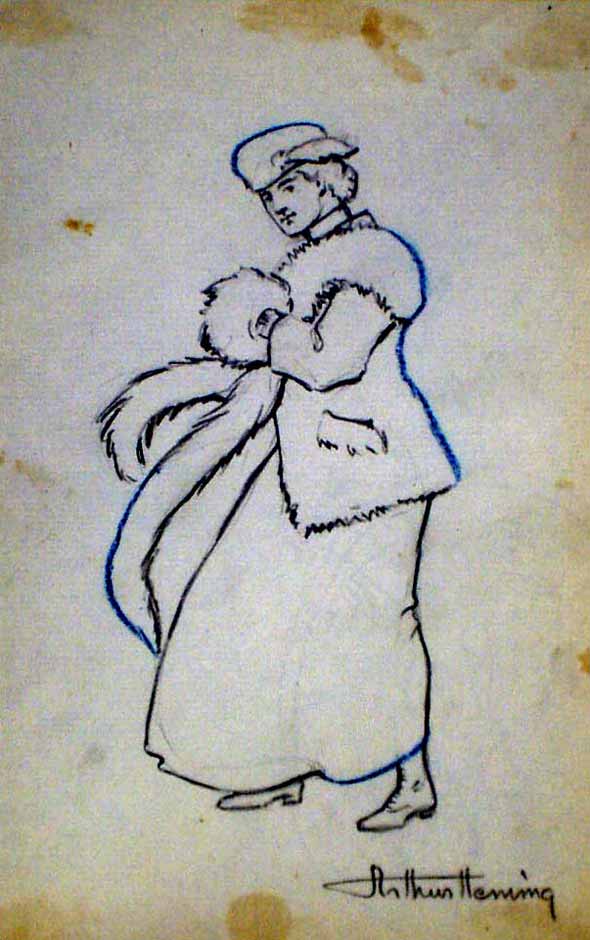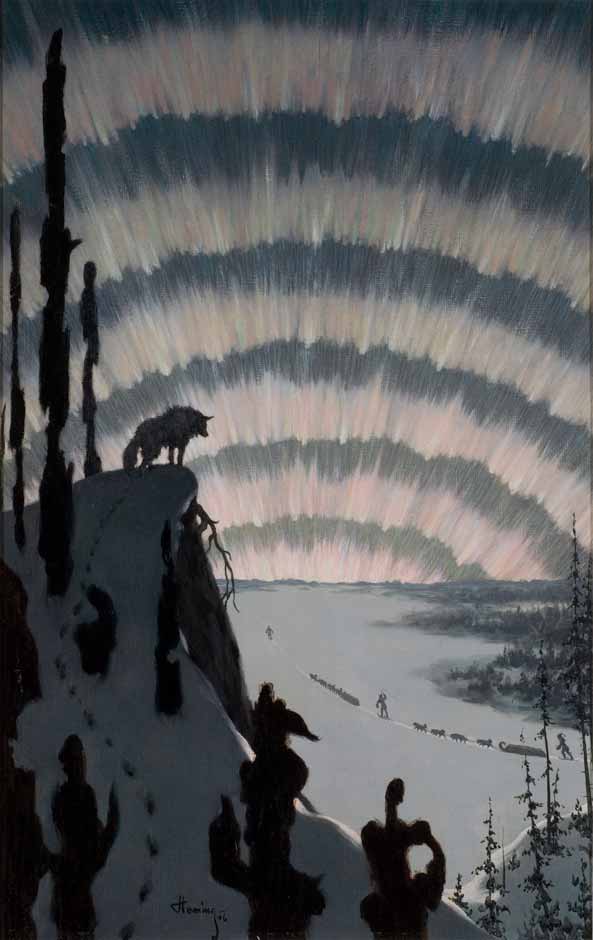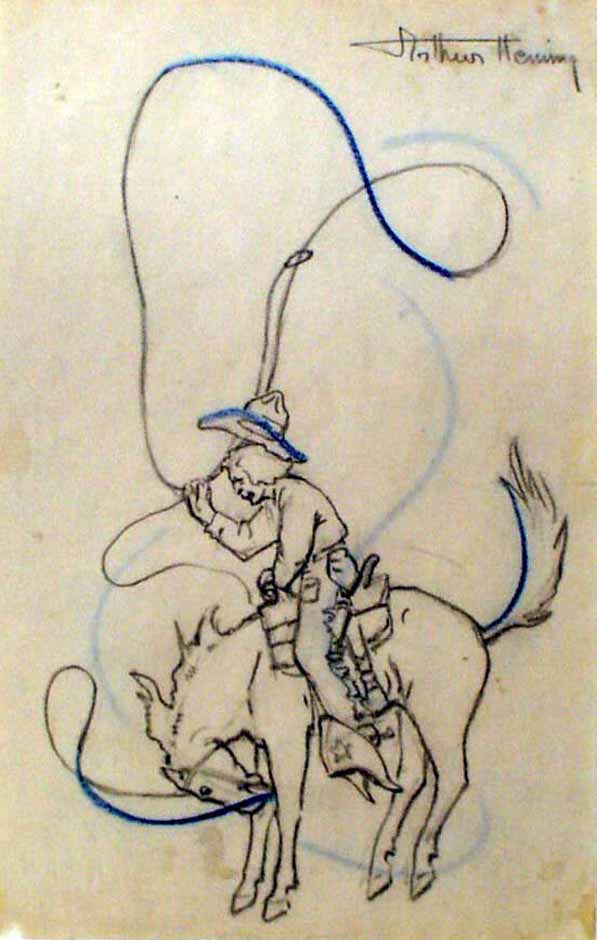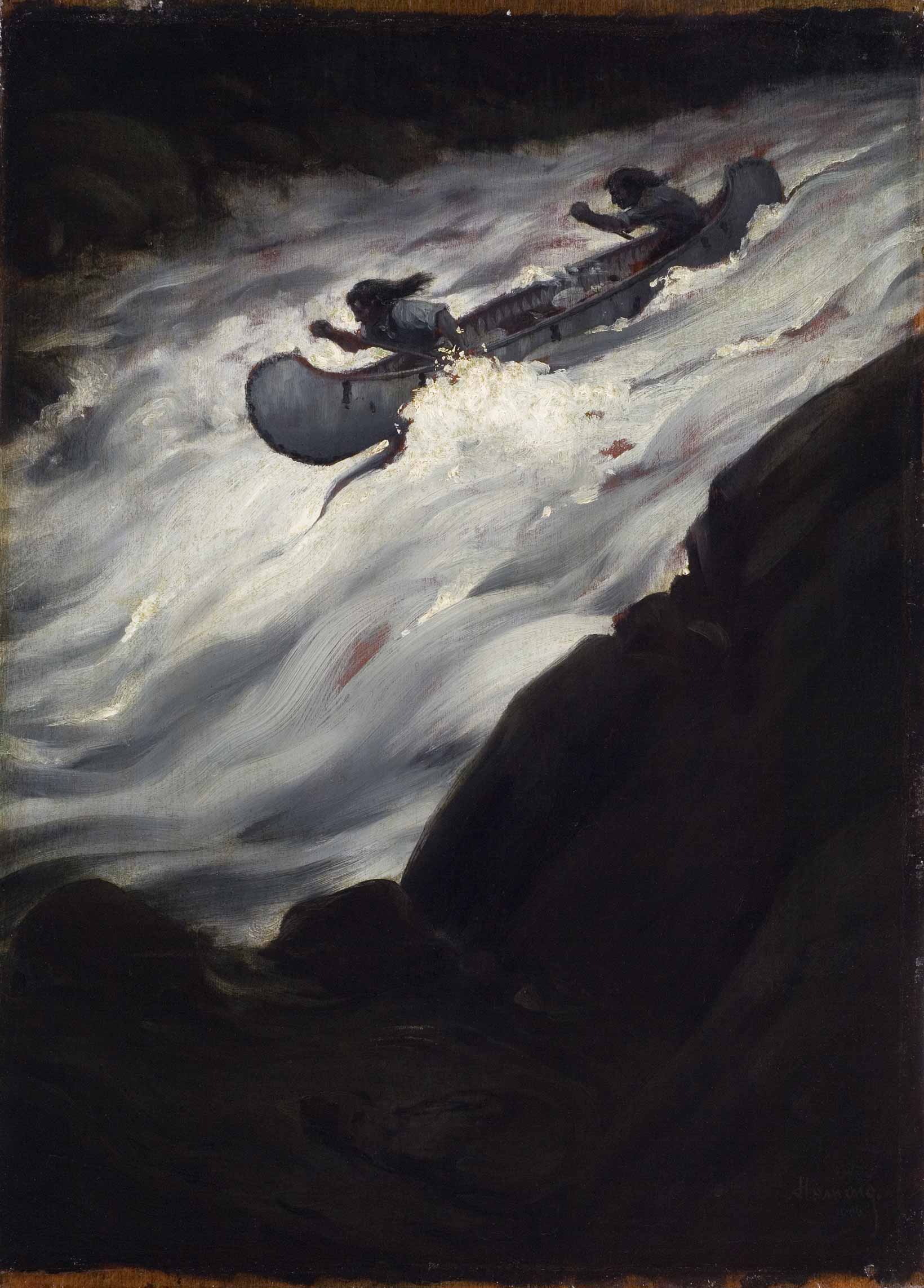Fox Chase
Arthur Heming
- The Museum will be closed Sunday, April 9 in observance of Easter.
Near the center of The Fox Chase, the Canadian artist Arthur Heming is shown riding a horse dressed in a red hunting coat and sporting a black top hat.
Known as both a painter and writer, it is Heming’s manuscript, Miss Florence and the Artists of Old Lyme, which has proven vital in the Museum’s understanding of the day-to-day activities of the Griswold boardinghouse during the years around 1910.
Arthur Henry Howard Heming
Born January 17, 1870, Paris, Ontario, Canada
Died October 30, 1940, Hamilton, Ontario, Canada
In Old Lyme, summers, 1902-1910
Heming thought that he was color blind most of his life. His panel for the dining room was painted in black and white.
Heming spent much of his youth in the wilderness of Canada.
Heming was also a writer and completed two narratives about the Lyme Art Colony: Miss Florence and the Artists of Old Lyme and The Lions in the Lady’s Den.
Indeed, upon hearing of her death in 1937, Heming sat down and wrote his account of what he remembered about the Lyme Art Colony.
He died three years later and his unpublished manuscript was packed in a box of old papers. It was found years later and published in the early 1970s.
Heming does not include much detail about himself in his narrative about the Lyme Art Colony.
However, he did write another version of the art colony story, in the unpublishedThe Lions in the Lady’s Den, in which he describes Gilmour Gilmartin, a character who seems to be based primarily on himself. About Gilmartin he writes: “He’s the real thing — son of a Hudson’s Bay Factor, lived all his life in the wilds of Northern Canada and what he doesn’t know of out-door life isn’t worth remembering. Though he never saw civilization until he was thirty years old and has knocked around with Indians and Eskimos all his life, he’s the straightest and most naive chap I’ve ever known. He’s got a keen sense of humor and is obliging and generous to a fault, but he’s got his weak point, too, for he’s sensitive to a degree, and when his dander’s up, watch out, for he’s got red hair.”
The non-fictional Heming chose art at an early age and by 16 was appointed the assistant art instructor at the school where he studied. By 1899, Heming traveled to New York and studied at the Art Students League with Frank Vincent DuMond, the artist who would bring other students to Old Lyme to paint during the summer, and it was most likely he who introduced Heming to Old Lyme. Heming also studied in London in 1904.
During his art studies, a colleague convinced Heming that he was partially colorblind. In order to avoid artistic mistakes, Heming worked for years in only black, white, and yellow.
Indeed, for his panel in the Griswold dining room, Shooting the Rapids (1906), Heming painted a black and white composition of a two woodsmen battling raging rapids in a birch bark canoe. However, by age 60, Heming discovered that he was not color blind, and spent the last decade of his life painting colorful compositions for which he received great acclaim.
By 1910, Heming is living in Toronto, Canada, but he also lists Old Lyme as an address.
Many of Heming’s memories relate to key events that date from this pivotal summer. Woodrow Wilson was in residence with his family that summer, and Heming wrote about the artists playing tricks on the future President. Moreover, it was the year the artists took it upon themselves to redecorate the boardinghouse as a surprise to Miss Florence. Lewis Cohen identifies Heming as one of his co-conspirators in the redecorating plot, and in a letter of confession to Miss Florence says, “I have been taking some liberties with the old house, and trust I shall be forgiven. But if you decide to prosecute me, I have much pleasure in implicating Arthur Heming as my chief accomplice and Harry Hoffman as an accessory before the fact: please have them held, without bail!” The following is what Heming remembered about Miss Florence discovering the surprise:


